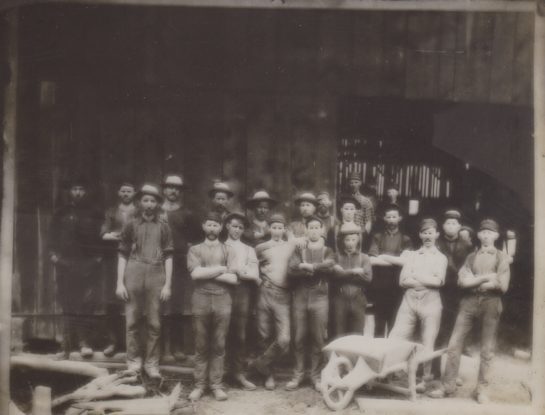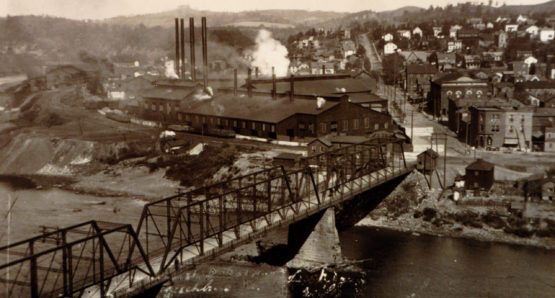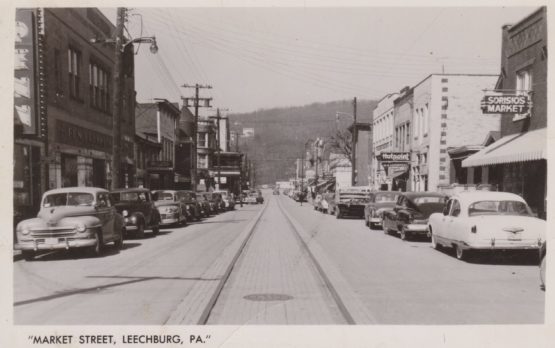HISTORY
1783 – 1827
Leechburg has successfully navigated changing economic environments over its history, and, as a result, has continually evolved and flourished.
The site of Leechburg, consisting of a land grant of 192 acres, was first patented in 1783 by White Mattock, a native American chief. After the Revolutionary War, the area, first known as Friendship and subsequently White Plains, became a farming community as British and German settlers established farms in the area.
It remained a quiet farm community until 1827 when civil engineer, David Leech, (for whom the town was later named) arrived and began building a dam in Leechburg on the Kiskiminetas River as part of the Pennsylvania Mainline Canal which connected Philadelphia and Pittsburgh. David Leech remained in Leechburg, and through his efforts and the efforts of other business people, Leechburg became prosperous as the major port and shipping center west of the Alleghenies. In time, the canal system became obsolete, but it stimulated Leechburg’s growth. Without it, Leechburg’s eventual role as an industrial center may never have evolved.

1850 – 2016


Eventually, railroads began to replace the canal as a way to ship goods and raw materials, and Leechburg continued as a successful railroad shipping center. The borough of Leechburg was incorporated in March of 1850.
In the late 1800s, the Leechburg Area transitioned yet again and flourished as a major steel making and mining center. In 1872, the first steel mill was constructed in Leechburg which, in 1900, became part of the United States Steel Corporation. This mill was the first in the world to melt steel utilizing natural gas. The Leechburg Foundry and Machine Company was founded in 1887. One of the officers was George Mesta who ultimately established an operation in West Homestead under the name Mesta Machine, the largest machine shop in the world. The West Leechburg Steel Company (Allegheny Ludlum) was founded in 1897 and operated its West Leechburg plant until 2005. The last steel operation built in the area was the Bagdad plant of Allegheny Ludlum built in 1960 and idled in 2016.
The steel mills were fired by the abundant coal deposits in the area. As such, productive coal mines throughout the county operated in support of local steel production. Hicks Coal was the major coal producing company in the area and was headquartered in Leechburg. The mining and steel industries helped the area thrive and provided economic independence for many decades. These industries no longer exist in the area, so now Leechburg is in another changing economic cycle.
TODAY
The Leechburg Area has evolved from a farming community, to a major canal and railroad shipping center, to an extensive industrial center with steel sheet works, foundries, and abundant coal mines. In order to thrive, the Leechburg area must now again adapt to change, and the LACDC wants to help Leechburg successfully navigate towards its future.